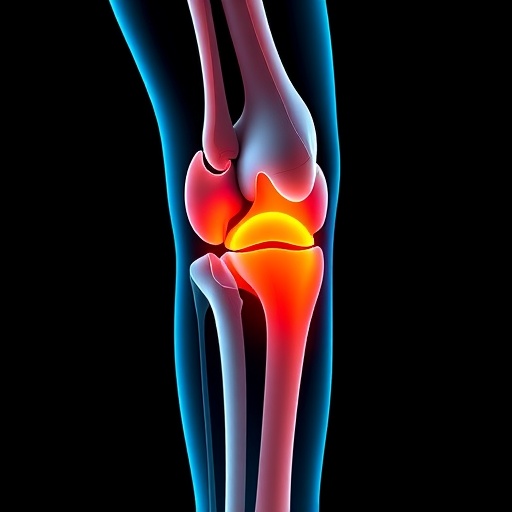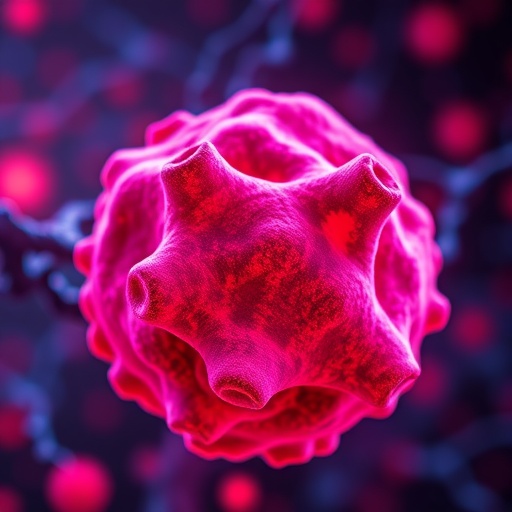
In the relentless pursuit of understanding neurodegenerative diseases, particularly Alzheimerâs disease, a groundbreaking study recently published in Nature Communications unveils a novel therapeutic strategy centered on enhancing the brain’s innate ability to clear harmful protein aggregates. The team led by Wang, Wang, and Liu has pioneered an innovative approach that leverages the natural phagocytic activity of microglia â the brainâs resident immune cells â to target the toxic amyloid-β plaques characteristic of Alzheimerâs pathology. This work offers profound insights into the dynamic interplay between microglial morphology remodeling and activation, brought to light through the engineering of bifunctional chimaeric molecules, marking a significant leap forward in combating neurodegeneration.
Amyloid-β accumulation in the brain has long been recognized as a hallmark of Alzheimerâs disease, contributing to synaptic dysfunction and neuroinflammation. Traditional therapeutic strategies have struggled to mitigate the progression of amyloid pathology effectively, often failing in clinical trials due to complexity in targeting these resilient plaques. This new approach departs from convention by engaging the brainâs own immune defenses more precisely, aiming to restore or enhance microglial phagocytosis â the process by which these immune cells engulf and digest cellular debris, pathogens, and misfolded proteins like amyloid-β.
Central to the study is the concept that microglia are highly plastic cells capable of switching between various activation states, each associated with distinct morphological and functional profiles. Wang and colleagues elucidated how remodeling microglia morphology can be strategically harnessed to optimize their ability to phagocytose amyloid-β. By synthesizing bifunctional chimaerasâengineered molecules designed to simultaneously bind amyloid-β and activate phagocytic receptors on microgliaâthe researchers demonstrated enhanced clearance of amyloid plaques in vitro and ex vivo brain models.
The bifunctional chimaera constructs represent a sophisticated bioengineering feat, combining targeting moieties that recognize amyloid-β aggregates with ligands that engage key receptors involved in microglial activation pathways. This dual-action mechanism ensures that microglia are effectively directed to disease sites and are simultaneously triggered to heighten their phagocytic response. The study details how such targeted activation not only enhances amyloid clearance but also subtly remodels microglial morphology, shifting them towards states more conducive to debris engulfment while avoiding overt pro-inflammatory phenotypes often linked to neurotoxicity.
In-depth imaging and biochemical assays reveal that these chimaeras foster an increase in microglial cell surface area and branching complexity, morphological changes correlated with increased motility and surveillance capabilities. Such remodeling facilitates improved scanning of the neural microenvironment for pathological substrates. Importantly, the investigators observed that this chimaera-induced activation strikingly balanced clearance efficacy with minimal induction of neuroinflammation, addressing a longstanding therapeutic challenge where boosting microglial activity risks exacerbating neuronal damage.
Delving deeper into microglial signaling, the research team identified that receptor pathways such as TREM2 and Fc receptors, classically implicated in microglial phagocytosis, are pivotal targets modulated by bifunctional chimaeras. Activation of these receptors triggered downstream cascades promoting actin cytoskeleton rearrangement, essential for morphological adaptation and phagosome formation. The chimaeras were fine-tuned to leverage these pathways, thus optimizing microglial functional states towards effective amyloid-β internalization and degradation.
This study not only highlights the therapeutic potential of modulating innate immune responses in neurodegenerative disease but also provides a framework for designing next-generation biologics that exploit the endogenous cellular machinery. By combining detailed molecular characterization with functional assays, the authors offer compelling evidence that the engineered bifunctional molecules can be strategically tailored to precisely regulate immune cell phenotypes in the central nervous system.
Beyond the immediate implications for Alzheimerâs disease, the findings hint at broader applications where microglial dysfunction plays a role, including other forms of dementia, traumatic brain injury, and multiple sclerosis. The capacity to manipulate microglial morphology and activation states through targeted bifunctional agents could pave the way for more effective therapies addressing the neuroimmune interface in a range of neurological disorders.
Equally notable is the methodological innovation introduced by the study. The team utilized advanced high-resolution microscopy and flow cytometry to monitor real-time changes in microglia upon treatment with the chimaeras. By quantifying alterations in cellular morphology metrics alongside key activation markers, they created a robust assessment platform for screening future candidates with enhanced phagocytic inducibility.
While the research offers promising avenues, it also calls for cautious optimism. The translation from in vitro and ex vivo models to in vivo systems remains a critical next step. Issues related to delivery, specificity, and long-term effects of such biologics in the complex brain milieu require further exploration. Nevertheless, the strategic harnessing of microglial plasticity and the innovative design of bifunctional chimaeras illuminate a promising path forward in addressing the stubborn challenge of amyloid clearance.
In synthesizing their results, Wang, Wang, and Liu underscore the intricate balance necessary to fine-tune microglial activation without triggering detrimental inflammatory pathways, a nuance essential for clinical viability. Their work exemplifies how merging immunology, neurobiology, and molecular engineering can yield transformative therapeutic concepts.
The prospect of revitalizing the brainâs innate defense mechanisms to clear pathological proteins offers hope not only for halting Alzheimer’s progression but potentially reversing neural damage through enhanced cellular cleansing. As research advances, such bifunctional molecular strategies could redefine therapeutic paradigms across a spectrum of neurodegenerative conditions.
In sum, this pioneering study marks a conceptual and technological milestone, showcasing how targeted modulation of microglial morphology and activation via bifunctional chimaeras can effectively promote amyloid-β clearance. It lays a foundational stone for future investigations aiming to transform how we approach neuroimmune modulation in disease contexts, opening exciting vistas for innovative treatments grounded in precise control of cellular states within the brain.
Subject of Research: Targeting microglial phagocytosis to enhance amyloid-β clearance in Alzheimer’s disease through morphology remodeling and immune activation.
Article Title: Targeting phagocytosis for amyloid-β clearance: implications of morphology remodeling and microglia activation probed by bifunctional chimaeras.
Article References:
Wang, Y., Wang, Z., Liu, Z. et al. Targeting phagocytosis for amyloid-β clearance: implications of morphology remodeling and microglia activation probed by bifunctional chimaeras. Nat Commun 16, 8128 (2025). https://doi.org/10.1038/s41467-025-63458-3
Image Credits: AI Generated
Tags: Alzheimerâs disease treatment strategiesamyloid-β clearance mechanismsbrain immune cell functionchimaeric molecules in medicineenhancing microglial responseinnovative approaches to neurodegenerationmicroglia activation therapiesNeurodegenerative disease researchphagocytic activity in neuroinflammationsynaptic dysfunction and neuroinflammationtargeting amyloid plaques in Alzheimerâstherapeutic strategies for Alzheimer’s disease




